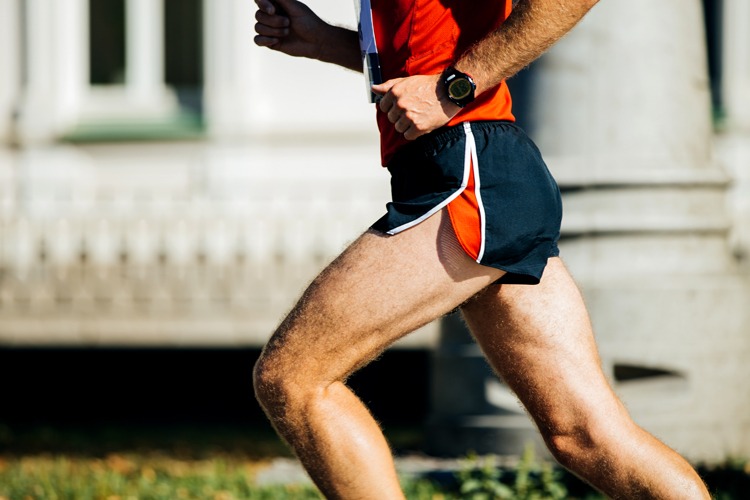Hip Extension And Mobility For Runners Prevent It Band Syndrome
To prevent IT band syndrome, improve hip extension and mobility through specific exercises for runners. Focus on targeted stretches and strengthening movements.
Proper hip function is crucial for runners to avoid IT band syndrome, a common overuse injury that causes pain on the outer side of the knee. By incorporating exercises that enhance hip extension and mobility, runners can help reduce strain on the IT band and improve overall performance.
We will explore the importance of hip flexibility for runners, key exercises to strengthen the hip muscles, and tips on incorporating hip mobility work into your training routine. Let’s delve into how hip extension and mobility can play a significant role in preventing IT band syndrome and enhancing overall running efficiency.
The Importance Of Hip Extension And Mobility
Enhancing hip extension and mobility is crucial for runners in preventing IT band syndrome. Maintaining proper hip function enables runners to achieve optimal performance while reducing the risk of injuries. Proper extension and mobility aid in efficient running mechanics, ensuring runners stay injury-free and perform at their best. Let’s delve into the importance of hip extension and mobility for runners.
How Hip Extension Impacts Running
Hip extension directly influences running efficiency. Efficient hip extension helps propel the body forward with each stride, leading to improved speed and endurance. Inadequate hip extension can result in compensatory movements that may lead to strain and potential injury, particularly the IT band. It’s imperative for runners to cultivate proper hip extension to optimize their running performance and to minimize potential injuries.
Benefits Of Improved Hip Mobility
- Enhanced hip mobility promotes fluid and efficient running
- Improved mobility decreases the strain on the IT band and surrounding muscles
- Proper hip mobility allows for a full range of motion, reducing the risk of overuse injuries
- Enhanced hip mobility contributes to better overall running posture and form, leading to improved performance
By focusing on the improvement of hip mobility, runners can ensure better movement quality and reduce the likelihood of IT band syndrome and other running-related injuries.

Credit: www.pinterest.com
Exercises To Improve Hip Extension
Exercises to Improve Hip Extension are crucial for runners looking to prevent IT band syndrome. By focusing on hip mobility and strength, runners can enhance their performance and reduce the risk of injury.
Hip Flexor Stretches
Frequent hip flexor stretches can help improve hip extension for runners. Consider incorporating stretches like standing quad stretch and kneeling hip flexor stretch into your routine.
Glute Strengthening Exercises
Engaging in glute strengthening exercises is also beneficial for enhancing hip extension. Perform exercises such as glute bridges and clamshells to target and strengthen the glute muscles.
Exercises To Enhance Hip Mobility
Hip Circles And Leg Swings
Performing regular hip circles and leg swings can help improve flexibility and range of motion in the hips, reducing the risk of IT band syndrome.
Pigeon Pose And Butterfly Stretch
Include pigeon pose and butterfly stretch in your routine to target the hip muscles and promote better hip mobility for runners.

Credit: www.kinetic-revolution.com
Incorporating Hip Extension And Mobility Workouts Into Your Routine
When it comes to preventing IT band syndrome, incorporating hip extension and mobility workouts into your routine is crucial for runners. By focusing on hip extension and mobility exercises, you can improve your running performance and reduce the risk of IT band syndrome. In this section, we will explore warm-up exercises, integration into strength training, and the importance of prioritizing hip extension and mobility for runners
Warm-up Exercises
Before diving into your run or workout, it’s essential to incorporate proper warm-up exercises to prepare your body for the demands of running. These warm-up exercises should focus on activating and mobilizing the hip muscles, ensuring they are ready for the range of motion required during your run. Incorporate dynamic movements such as leg swings, hip circles, and walking lunges to promote hip extension and mobility. These exercises will help prevent stiffness and enhance flexibility, reducing the strain on the IT band during your run.
Integration Into Strength Training
Integrating hip extension and mobility workouts into your strength training routine is essential for building stability and resilience in the hips. Including exercises like squats, deadlifts, and lunges not only strengthens the hip muscles but also improves their flexibility and range of motion. Additionally, incorporating resistance bands and hip-specific exercises such as clamshells and bridges can specifically target the muscles involved in hip extension, promoting better alignment and function during running.

Credit: www.runtothefinish.com
Frequently Asked Questions For Hip Extension And Mobility For Runners Prevent It Band Syndrome
Q: How Can Hip Extension Prevent It Band Syndrome In Runners?
A: Hip extension exercises strengthen the muscles in the hip, promoting proper alignment and reducing strain on the IT band during running.
Q: What Are Some Effective Mobility Exercises For Runners?
A: Incorporating exercises like hip circles, leg swings, and foam rolling can improve hip mobility and prevent IT band syndrome in runners.
Q: Why Is Hip Mobility Important For Runners?
A: Adequate hip mobility allows for proper running form, reduces the risk of IT band syndrome, and improves overall performance.
Conclusion
To sum up, incorporating hip extension exercises and improving mobility is crucial for preventing IT band syndrome in runners. By regularly engaging in targeted movements, such as hip thrusts and dynamic stretching, athletes can significantly enhance their performance and minimize the risk of injury.
Prioritizing hip health is essential for maintaining strong, resilient running form.





